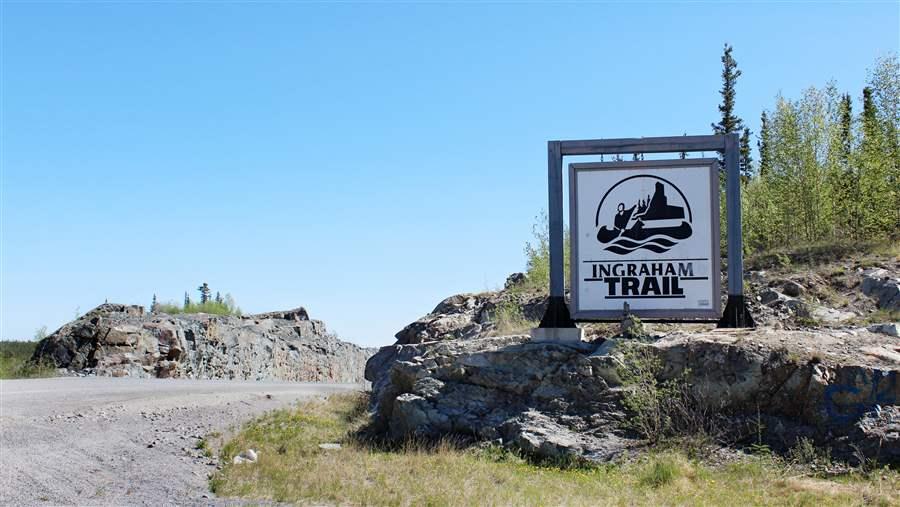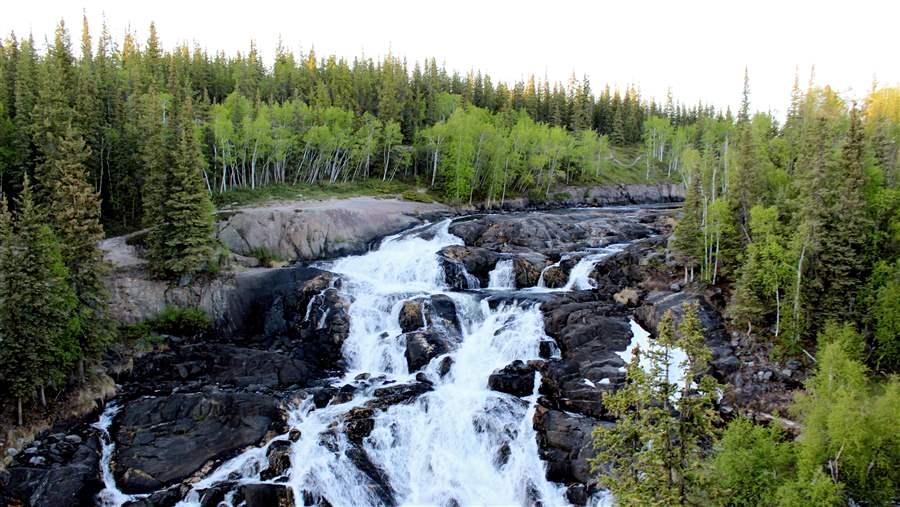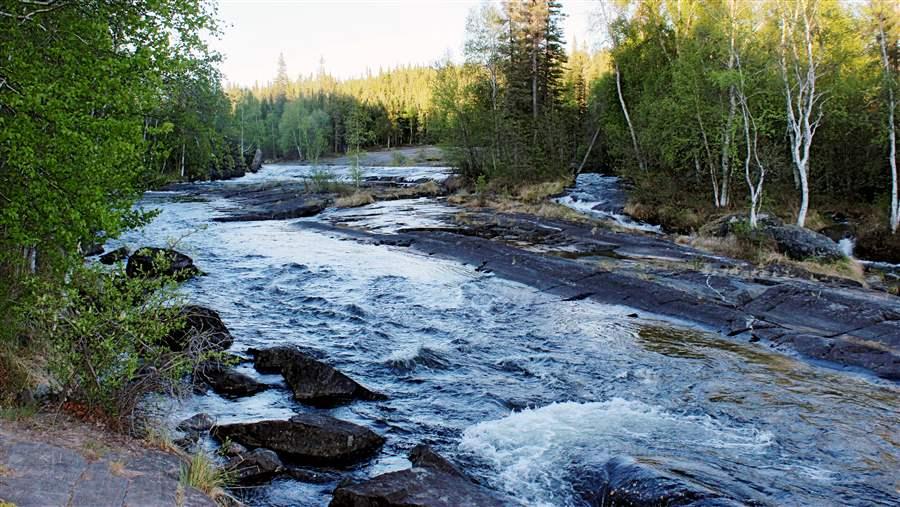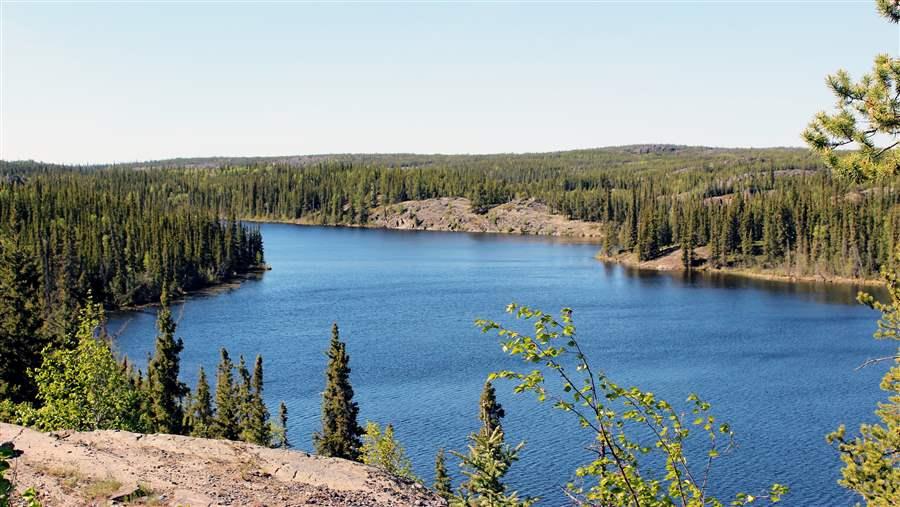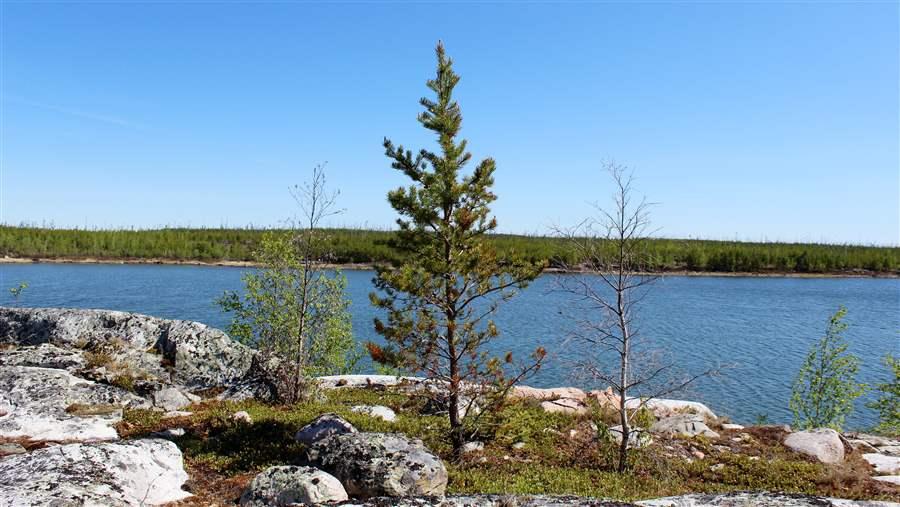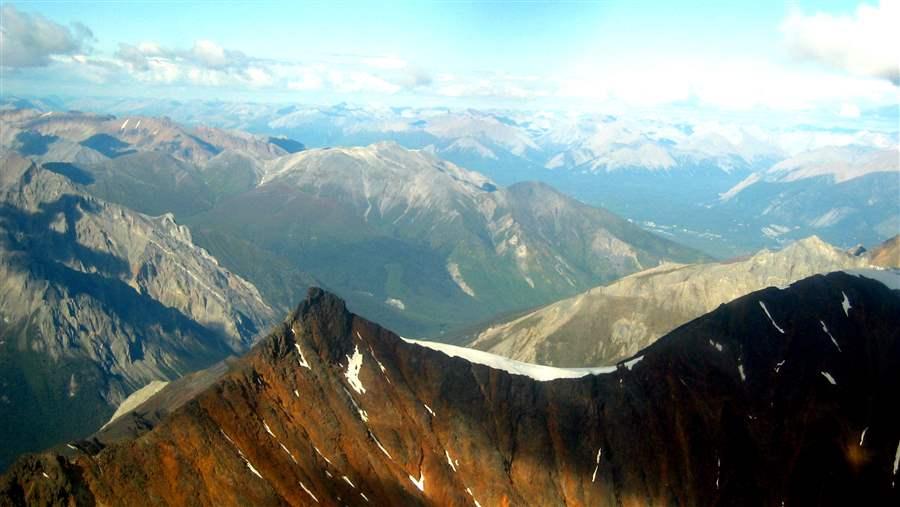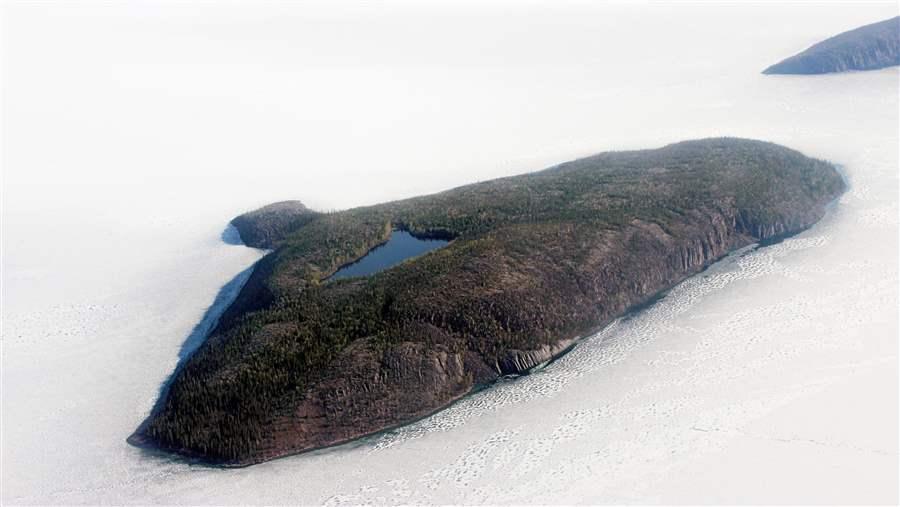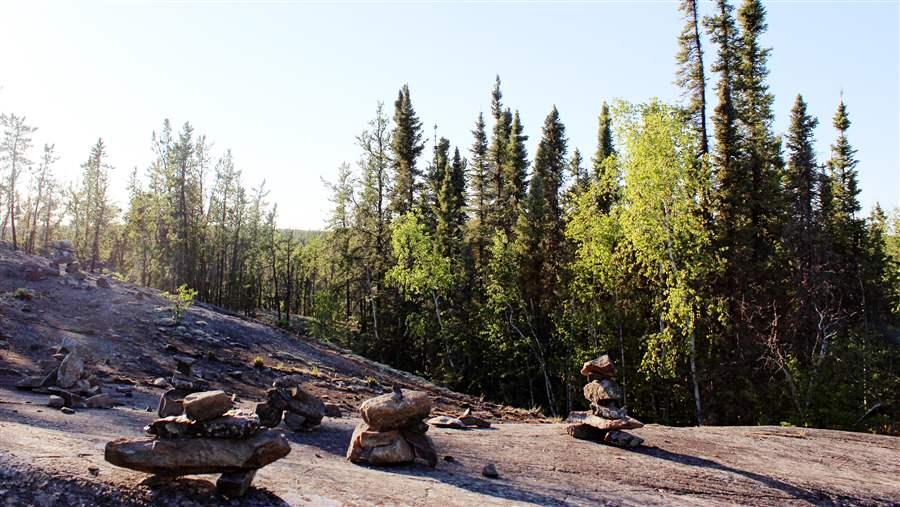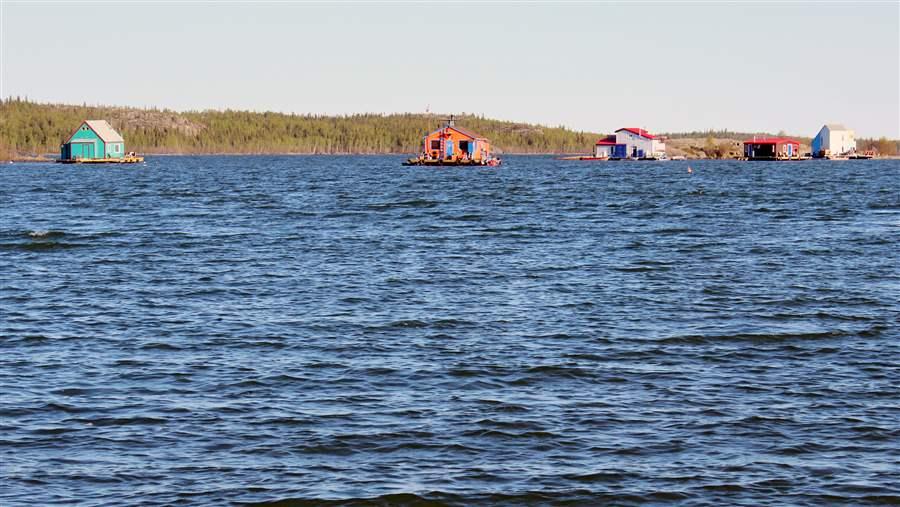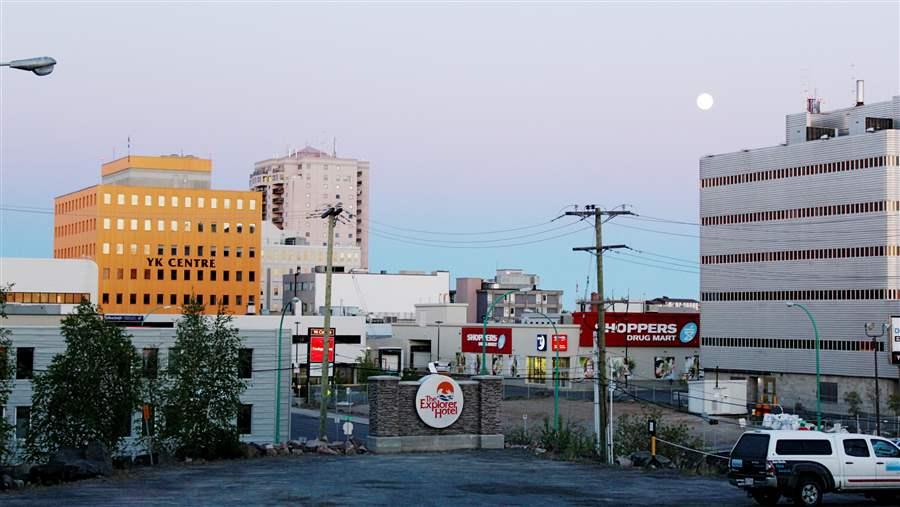Canada’s Northwest Territories: Wilderness Gems Sparkle in Summer’s Light
In a Region with Few People and Fewer Roads, Boreal Forest Dominates Landscape
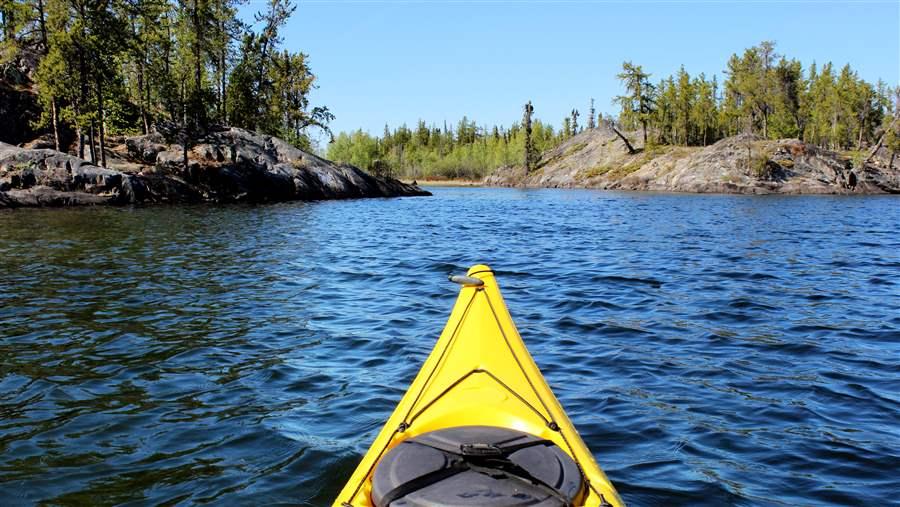 © Sheldon Alberts
© Sheldon AlbertsThe view from a kayak on Tibbitt Lake at the terminus of Ingraham Trail about 40 miles from Yellowknife, the capital of Canada’s Northwest Territories.
TIBBITT LAKE, Northwest Territories—Forty miles out of Yellowknife, at the dead end of a quiet northern highway called the Ingraham Trail, Mother Nature greets travelers with a scene of remarkable tranquility.
The road narrows from a paved two-lane to a strip of gravel before disappearing down a gentle slope into a stream so clean and clear that every riverbed rock and pebble is on shimmering display.
Precambrian granite shoulders the waterway, and from it rise hardy stands of black spruce and poplar and jack pine. The sky is deep blue, empty of clouds, and on an afternoon in June, free from the summer haze of more humid climates.
The only thing in motion is water, rushing over a small set of rapids. Even the trees are still.
This is a landscape to catch a painter’s eye. Even better than the view: In Canada’s Northwest Territories, there is nothing in the least bit uncommon about it.
Henry David Thoreau said people need “the tonic of wildness” to stay invigorated. Few places have wildness in as abundant supply.
Nearly three times the size of California but with fewer than 45,000 residents, the Northwest Territories is as sprawling, remote, and pristine an area as any in North America. Its northern reaches are defined by Arctic tundra, but the majority of its land is boreal forest.
Almost half its population—about 19,000 people—lives in Yellowknife, the center of government and industry, and the jumping-off point for travelers in search of something more than a weekend getaway to heavily traversed outdoor destinations farther south.
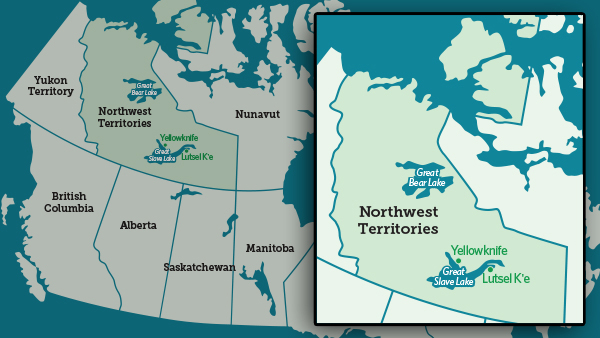
It is a region of rugged beauty—and rugged work.
Yellowknife markets itself as the Diamond Capital of North America, testament to the importance of mining and resource development to the region’s prosperity.
But just a few miles outside the city, the weathered tower of the now-shuttered Giant gold mine offers a visual reminder of the benefits—and costs —of an economy tied to a natural resource. Seven million ounces of gold were mined at the site from 1948 until its closure in 2004. Today, the Giant mine’s legacy includes 260,000 tons of arsenic trioxide waste and a massive environmental cleanup operation that could cost more than $1 billion.
The debate over how to balance sustainable resource development and environmental protection has raged here for decades. But it has grown more intense since the spring of 2014, when the government of the Northwest Territories assumed major new powers over land use and resources from Canada’s federal government.
Finalization of this “devolution” of powers has generated fresh opportunities for conservation of the Northwest Territories’ wild areas, even as development opportunities grow.
An early positive sign: The territorial government used its new powers to adopt legally binding interim protections for 18.9 million acres of boreal parks and refuges that had been previously designated by the federal government in Ottawa.
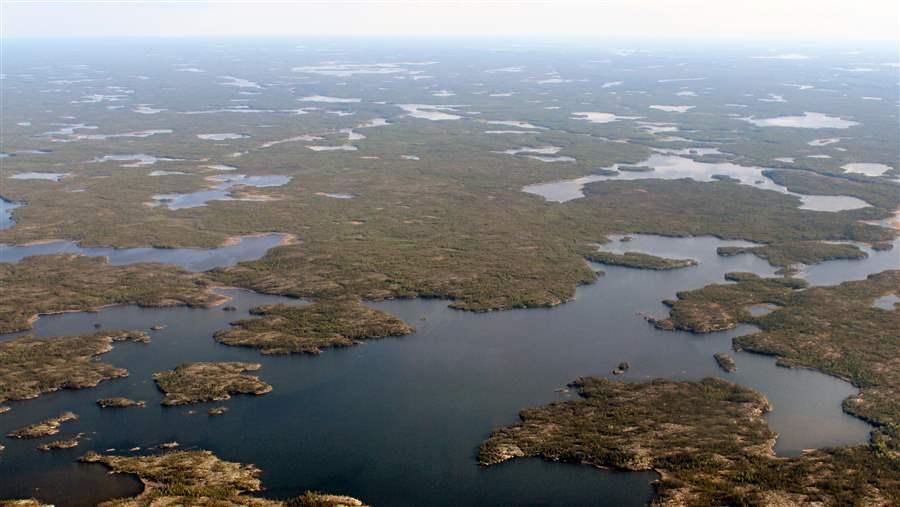 © Sheldon Alberts/The Pew Charitable Trusts
© Sheldon Alberts/The Pew Charitable TrustsAn aerial view shows the prevalence of lakes throughout the boreal forest region near Yellowknife, capital of Canada’s Northwest Territories.
The protected areas include the Horn Plateau National Wildlife Area (Edéhzhíe), Ramparts River National Wildlife Area (Ts'ude niline Tu'eyeta), and Thaidene Nene National Park Reserve. Each has ecological importance and cultural significance to the Northwest Territories’ aboriginal peoples.
The Pew Charitable Trusts supports the permanent protection of all three areas as part of a broader effort to conserve boreal forest in the Northwest Territories and throughout Canada.
Many of the conservation efforts in Canada’s north are being driven by First Nations aboriginal communities developing land use plans to protect large swaths of their traditional territory.
Although specifics are still being negotiated, the role of aboriginal governments within the devolution process in the Northwest Territories is formally recognized. The transfer of powers to territorial authorities has laid a foundation for more locally accountable and responsible decision-making on lands and resources.
The fragility of this forest environment came into painful focus in the summer of 2014 as hundreds of forest fires—started mainly by lightning strikes—raged across the territory and blanketed the region in smoke. More than 8 million acres had burned by August. The scope of those fires underscored the sheer scale of this wilderness.
The Northwest Territories’ boreal forest spans 235 million acres, three times the size of the United Kingdom. It encompasses nearly 20 percent of Canada’s entire boreal region, one of the planet’s last remaining continental-scale frontiers.
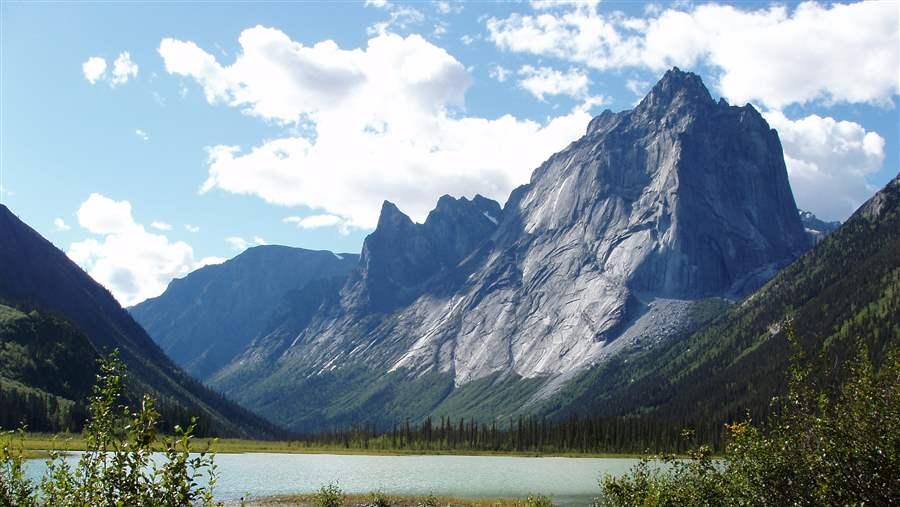 © Steve Kallick
© Steve KallickThe Mackenzie Mountains are a dominant feature of Nahanni National Park Reserve in the southwestern part of the Northwest Territories.
First-time visitors to the Northwest Territories are quickly schooled in its natural assets, including:
- Great Bear Lake. The world’s seventh-largest by area, and one of the world’s cleanest.
- Wood Buffalo National Park. Shared with the province of Alberta, it is North America’s largest protected area and contains the last natural nesting habitat of the endangered whooping crane.
- Great Slave Lake. Another of the world’s top 10 in size, it has the deepest fresh water on the continent, with depths greater than 2,000 feet.
- The Mackenzie River. Canada’s longest river is second in length in North America only to the Mississippi River. It is the longest river flowing into the Arctic Ocean.
- Nahanni National Park Reserve. The traditional home of the aboriginal Dehcho First Nations, this boreal park in the southwest portion of the Northwest Territories was among the first to be designated by UNESCO as a World Heritage Site. It has since expanded sixfold to more than 11,500 square miles. Nahanni includes the Cirque of the Unclimbables, a daunting set of peaks in the Ragged Range of the Mackenzie Mountains.
The remoteness of the Northwest Territories’ wildest places naturally limits human access. Whereas Banff National Park in Alberta attracts 3 million to 4 million visitors a year, Nahanni typically draws about 1,000.
Although some of the wildest places in the Northwest Territories are difficult to reach, solitude is easily found even near the capital city.
Niven Lake, which lies just below Yellowknife’s popular Explorer Hotel, is a prime spot for birding, and paddlers flock to the waters of Great Slave Lake when the ice retreats in early June.
It is also possible, within a short drive from Yellowknife, to disappear onto trails and canoe routes and not encounter another soul.
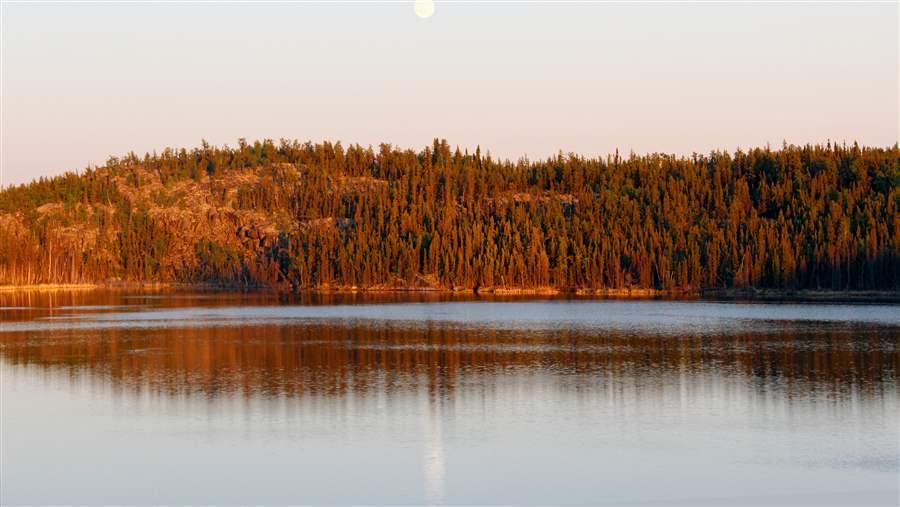 © Sheldon Alberts/The Pew Charitable Trusts
© Sheldon Alberts/The Pew Charitable TrustsThe moon rises over a boreal lake along Ingraham Trail. At the height of summer, the sun sets for only four hours, and the sky never fully darkens.
On Tibbitt Lake, at the terminus of the Ingraham Trail, a visitor can paddle a kayak for hours on a summer afternoon and see no signs of human activity except for a handful of backcountry cabins and the remnants of a few campfires.
At nearby Hidden Lake Territorial Park, hikers arriving at the head of Cameron Falls Trail often find an empty parking lot even on a warm June evening. Warnings about recent bear sightings are posted on the doors of the trailhead outhouse.
The trail itself winds through rock formations more than 2 billion years old, hugging the edges of towering cliffs and giant boulders dropped there by retreating glaciers.
At trail’s end, the payoff is an uncluttered view of pine forest framing a 55-foot waterfall that plunges down to the Cameron River. A steady roar from the falls is the only sound to fill the valley.
At the height of summer, when the northern daylight refuses to give way to dark, the orange glow of a midnight sun lingers on the horizon.
It’s a reminder about what a real wilderness looks like.
Sheldon Alberts is a communications officer for The Pew Charitable Trusts’ International Boreal Conservation Campaign.
